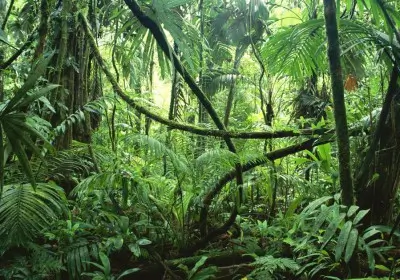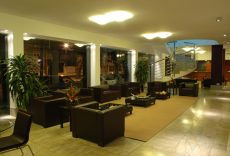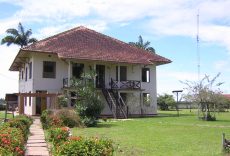Travel Package Amazone - Belem

Amazon – Belem – Marajo island 4 days / 3 nights
Pick-up at the airport and transfer in Belem, check-in HOTEL REGENTE. In the afternoon boat trip on the Amazon River. Overnight stay with breakfast. Day 2: Very early in the morning transfer by a typical ferry ( 3 hours ) to the largest fluvial reed island in the world, Marajo Island. Transfer on the island by motorized canoe towards the jungle, where we arrive around noon at a colonial Amazon farm ( fazenda do Carmo ) where we have lunch ( included ). In the afternoon horseback ride and canoe trip along the mangroves. Here we encounter all kinds of animals including crocodiles, howler monkeys, tocanos, Amazonian pigs, and maybe even an Anaconda!!! After dinner ( included ) the lights go out !!!
HOTELS


Unveiling Belém: Northern Brazil’s Shining Gem
Belém, a bustling metropolis with approximately 1.5 million inhabitants, proudly stands as the economic epicenter of the northern region and holds the prestigious title of being the capital of the resource-rich state of Pará. Nestled amidst the lush Amazon rainforest, this city is renowned for its frequent rainfall, especially during the “less wet” season, which stretches from July to December. But don’t be discouraged by the rain – it often offers a refreshing respite from the equatorial heat.
Navigating Belém’s Geographical Wonders
As the mighty Amazon River nears the Atlantic Ocean, it gracefully splits into multiple branches, creating a complex network of channels, fluvial islands, and, ultimately, two vast estuaries. These natural dividers separate Marajó Island, famously known as “the continent island,” from the mainland. To the south, the estuary merges with the formidable Tocantins River. Belém’s strategic location places it just 120 kilometers from the Atlantic Ocean, where the Guamá River turns north, transforming into the majestic Guajará Bay. Notably, it boasts the largest port along the Amazon River, serving as a gateway to all navigable destinations along the river and its tributaries.
Dynamic Markets and Cultural Treasures
A visit to the Ver-O-Peso market and port may not yield many souvenirs for tourists, but the vibrant displays of fruits, vegetables, plants, animals, and fish, along with the bustling crowd, make it an intriguing experience. The most captivating section of the market is dedicated to medicinal herbs, roots, preserved snakes, and amulets for every conceivable occasion.
For those with an interest in culture and history, the Emilio Goeldi Museum is a must-visit. The museum comprises three distinct sections: the zoological-botanical garden, the aquarium, and the ethnology museum. Within the zoo, you’ll encounter manatees, jungle cats, alligators, snakes, monkeys, and a plethora of Amazonian birds. The highlight, however, is the museum itself, founded in 1866, boasting a remarkable collection of Marajoara ceramics from Marajó Island, indigenous artifacts, taxidermy birds, and vintage photographs.
Belém’s Enchanting Architecture
Belém seamlessly ranks among Brazil’s top ten vibrant and captivating cities. It successfully blends modernity with a rich and glorious past, evident in its architectural gems such as the Church of Our Lady of Carmo (Igreja do Carmo), the Metropolitan Cathedral (Igreja da Sé), and the Theater of Peace (Teatro da Paz).
The historic heart of Belém, known as Cidade Velha or Old Town, captivates visitors with its colorful and charming façades adorned with ceramic tiles imported from Europe centuries ago. Wandering through its narrow streets, one might feel as though time has stood still. This sector of the city houses a treasure trove of architectural gems, lovingly preserved as historical monuments.
Belém’s Lush Canopy and Beyond
Some of Belém’s streets are akin to tunnels of mango trees, offering a welcome respite from the sweltering heat. The city continues to beckon with a myriad of attractions, including Mercado Ver-o-Peso, Estação das Docas, Teatro da Paz, numerous churches, museums, as well as the natural beauty of nearby rivers, the picturesque tiles of Icoraraci village, and the inviting freshwater beaches of Mosqueiro.
Marajó Island: The Crown Jewel
Lastly, but certainly not least, Marajó Island awaits your exploration!
Marajó Island – A Natural Wonder
Marajó Island, spanning nearly 50,000 square kilometers, proudly stands as the world’s largest marine-fluvial island, harboring an ancient civilization renowned for its remarkable ceramics.
The island is divided into two almost equal regions. The eastern half, known as the fields region, is characterized by low-lying fields adorned with savannah-like flora, interspersed with strips of remaining forests along the rivers. Palm trees of various species and dense mangrove swamps grace the coastal areas. In contrast, the island’s western half, the forest region, remains cloaked in pristine primary forests.
Marajó experiences two distinct seasons: a very rainy one from January to June and a dry period from July to December. The limited roads on the island are elevated three meters above ground, a practical measure to combat the seasonal flooding. Marajó thrives on herds of buffaloes and zebus, which roam the campos (fields) and have adeptly adapted to the wetland conditions.
The island is a haven for bird enthusiasts, boasting hundreds of bird species, including egrets, flamingos, herons, parrots, ducks, hawks, toucans, and the elegant scarlet ibis with its distinctive curved beak. Witnessing a flock of deep-pink ibis against Marajó’s lush green backdrop is an unforgettable sight. The island’s wildlife also includes alligators, monkeys, capybaras, and sizable anacondas, creating a picturesque scene for an unforgettable photo safari.
Soure, the island’s principal town, is a charming enclave shaded by mango trees, where oxen and buffalos graze leisurely along its streets. Much like other coastal communities, it thrives primarily as a fishing village. Marajó Island also offers a paradise for fishing enthusiasts, whether you’re angling for the ferocious piranha or the impressive one-and-a-half-meter Pirarucu.
In conclusion, Belém and Marajó Island are hidden gems in Brazil, offering a unique blend of natural beauty, cultural richness, and historical charm. Exploring these destinations promises an unforgettable adventure filled with vibrant markets, captivating museums, architectural wonders, and encounters with exotic wildlife. Plan your journey to these enchanting locations and discover the allure of Northern Brazil.
Explore Belém, the Vibrant Entryway to the Amazon
Welcome to Belém, Brazil, an exuberant town nestled at the gateway of the Amazon River, where the majestic river converges with the boundless ocean. In this piece, we embark on a captivating journey through this enthralling city, a place that proudly upholds its rich historical and cultural heritage.
The Geographic Marvels of Belém
Belém owes its very existence to its extraordinary geographical location. Here, the mighty Amazon River embraces the vastness of the Atlantic Ocean, affording the city a strategic vantage point for commerce and maritime activities. It’s akin to witnessing the commencement of a grand adventure, as the Amazon bestows its invaluable waters to the glistening ocean, much like a mother sending her child out into the world.
The Abundance of Natural Resources
Belém’s affluence is not solely a result of its geographical positioning but also its bountiful natural resources. Rubber trees and cocoa plantations have thrived here for generations, significantly contributing to the city’s economic prosperity. However, it’s essential to acknowledge the darker chapters in Belém’s history, including the exploitation of indigenous laborers and issues related to narcotics.
The Persistent Shadow of Crime
As with any port city, Belém has its share of shadows. In certain areas and at specific times, the presence of crime and turmoil can be palpable, casting an inescapable shadow over the city. It’s reminiscent of a lush orchard inevitably attracting wasps in late summer. Visitors should exercise caution, as some parts of the city can be precarious. We were fortunate enough to escape unscathed, but we also learned of hostel guests who were robbed in the very spot we had traversed just minutes earlier, a mere 10 minutes from our lodging at “Fortaleza Hostel.”
An Adventure Amidst a Global Expedition
It’s crucial to acknowledge that travel always carries inherent risks, and during our global journey, we encountered our fair share of challenges. However, it’s all part of the adventure, provided it doesn’t involve violence. Our experiences taught us to be vigilant and alert, while also revealing the beauty of Belém and the warm hospitality of its people.
Immerse Yourself in Belém’s Rich and Diverse Culture
Delve into the vibrant and multifaceted culture of Belém, where the tapestry of history and modernity seamlessly unfolds along the banks of the Amazon. A visit to this captivating city promises to enchant you and deepen your appreciation for the captivating Amazonian region.
Request a personalized quote





